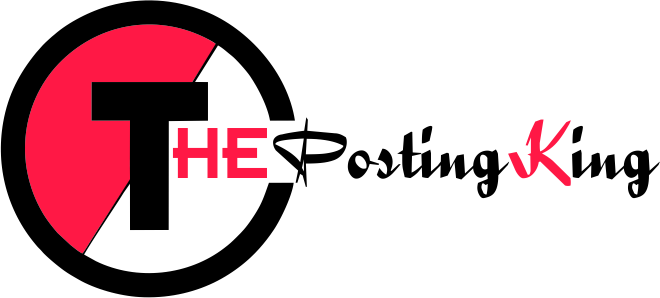Audit Management Software to Improve Risk Management

Premium Audit management software can play a crucial role in improving risk management within an organization. By automating and streamlining various audit processes, it enables better identification, assessment, and mitigation of risks. Here’s how audit management software can help enhance risk management:
- Centralized Data Repository: Audit management software provides a centralized platform to store all audit-related data, including risk assessments, findings, action plans, and historical audit reports. Having a single repository ensures easy access to critical information, fostering better decision-making and risk analysis.
- Real-time Visibility: The software allows stakeholders to access real-time data on audit progress and risk status. This enables quick identification of emerging risks and potential issues, allowing organizations to respond promptly and proactively.
- Automated Risk Assessment: Audit management software often comes with built-in risk assessment tools. These tools help auditors and risk managers identify and quantify risks associated with various processes, controls, and business activities.
- Standardized Audit Process: A well-structured audit management system enforces consistency in the audit process. It ensures that audits are conducted following predefined standards and guidelines, making it easier to identify systemic risks across different departments or projects.
- Tracking and Monitoring: The software allows tracking and monitoring of risk-related activities and control implementations. It facilitates tracking the progress of risk mitigation plans, ensuring that action is taken to address identified risks effectively.
- Automated Notifications: Automated notifications and reminders keep stakeholders informed about upcoming audits, pending actions, and risk status changes. This improves accountability and ensures timely response to risk-related matters.
- Data Analytics and Reporting: Audit management software often comes with data analytics capabilities. By analyzing audit data, organizations can gain valuable insights into risk patterns, trends, and potential areas of concern. Customizable reports can be generated to provide comprehensive risk profiles to management and stakeholders.
- Integration with Risk Management Systems: Some audit management solutions can be integrated with broader risk management systems. This integration allows the seamless transfer of data between different risk-related processes, enhancing overall risk management capabilities.
- Audit Trail and Documentation: The software creates an audit trail, documenting every step of the audit process, including risk assessments and risk treatment plans. This audit trail serves as a historical record that can be useful during internal and external audits or regulatory inspections.
- Continuous Improvement: By leveraging the insights and data generated through the software, organizations can continually improve their risk management strategies and practices. Lessons learned from past audits can be used to refine risk management processes over time.
In conclusion, leveraging ComplianceQuest’s premium audit management software can significantly bolster risk management practices within an organization. By centralizing data, providing real-time visibility, automating risk assessments, and facilitating tracking and monitoring, ComplianceQuest empowers businesses to proactively identify and mitigate risks. With its data analytics and reporting capabilities, seamless integration with risk management systems, and emphasis on continuous improvement, ComplianceQuest enables organizations to build a robust risk management framework that ensures compliance, enhances decision-making, and fosters long-term success.
Here are Some Potential Challenges in Implementing Premium Audit Management Software and Strategies to Overcome:
1. Resistance to Change: Introducing new software and processes may face resistance from employees who are accustomed to traditional methods. To overcome this, ensure open communication about the benefits of the software and provide comprehensive training to users to build their confidence in using the system effectively.
2. Data Migration and Integration: Transferring existing audit data into the new software and integrating it with other systems can be complex. Thoroughly plan the data migration process, perform data validation checks, and work closely with the software provider to ensure a smooth transition.
3. System Adoption and User Engagement: Encouraging employees to embrace the software and actively participate in the audit process is crucial. Engage with key stakeholders from the beginning, involve them in the software selection process, and seek their input to tailor the software to their needs. Offer incentives or recognition for active participation to boost user engagement.
4. Customization Challenges: Every organization has unique audit and risk management requirements. It’s important to choose a software solution that is highly customizable to align with your specific needs. Work closely with the software provider to configure the system to accommodate your organization’s workflows and processes.
5. Data Security and Privacy Concerns: Audit management software deals with sensitive and confidential information. Ensure the software adheres to industry-standard security practices and complies with relevant data protection regulations. Implement role-based access controls to limit access to sensitive data to authorized personnel only.
6. Integration with Existing Processes: To maximize the benefits of the software, it should seamlessly integrate with your existing audit, risk management, and compliance processes. Conduct a thorough assessment of your organization’s needs and ensure the software can work harmoniously with your established practices.
7. Training and Support: Adequate training and ongoing support are essential to help users fully utilize the software’s capabilities. Provide regular training sessions and establish a reliable support system where users can seek assistance with any issues they encounter.
8. Cost Management: Budget constraints can be a challenge, especially for smaller organizations. Carefully evaluate the cost-benefit analysis of implementing the software and consider long-term advantages such as increased efficiency, reduced audit costs, and improved risk management.
9. Regulatory Compliance: Ensure that the audit management software itself complies with relevant industry regulations and standards. Additionally, use the software to enhance your organization’s compliance efforts by incorporating necessary regulatory requirements into your audit processes.
By addressing these challenges proactively, organizations can successfully overcome obstacles and fully harness the potential of audit management software like ComplianceQuest to enhance risk management practices and achieve greater overall efficiency and compliance.



